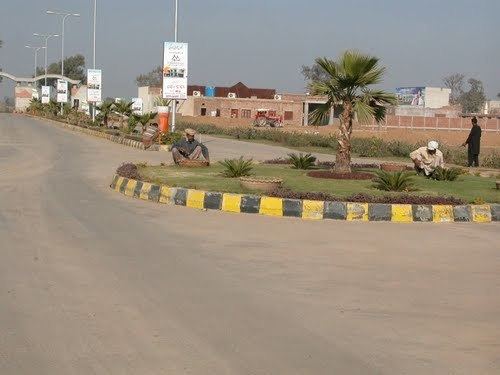Tehsil Wazirabad Tehsil Municipal status 1867 University Jamia Nizamia Ghousia | Region Punjab Union councils 5 Time zone PST (UTC+5) Local time Sunday 9:52 PM | |
 | ||
Weather 20°C, Wind NW at 10 km/h, 37% Humidity | ||
History of wazirabad punjab pakistan
Wazirabad (Urdu: وزِيرآباد) is an industrial city located in Gujranwala District, Punjab, Pakistan. Wazirabad is situated on the banks of the Chenab River nearly 100 kilometres north of Lahore on the Grand Trunk Road. It is 45 kilometres from Sialkot, 30 kilometres from the district capital - Gujranwala and about 12 kilometres from Gujrat. The city of Wazirabad is the headquarters of Wazirabad Tehsil, an administrative subdivision of the district, the city is itself subdivided into 5 Union Councils. Wazirabad City is located near the south banks of the Chenab River near a village Chanawan where the picturesque Nala Palkhu, a snow stream from the Himalayas joins to this big river.Khanki Headworks is a headworks situated on the River Chenab at village Khanki.
Contents
- History of wazirabad punjab pakistan
- Map of Wazirabad Pakistan
- Wazirabad gojranwala punjab pakistan wmv
- History
- British rule
- Khanki Headworks
- Independence
- Notable people
- References
Map of Wazirabad, Pakistan
Wazirabad gojranwala punjab pakistan wmv
History
Wazirabad, literally the city of the Wazir, was first settled in 1542 CE. In 1636 CE Wazir Hakim Illmmudiddin, an amir of Shah Jahan constructed the first ever residential building of Wazirabad namely Musaman Burj on the bank of Palkhu Nala. During the reign of Emperor Aurangzeb another building namely Shesh Mahal at the east of Musaman Burj was built during 1705 CE. After the decline of the Mughal Empire, the Sikhs, invaded and took control of Wazirabad.
The town was first take over by Charat Singh around 1760 together with other towns in the District. Maharja Ranjit Singh occupied the town in 1809 and Avitabile was appointed as the Nazim of the city. He built an entirely new town, with a straight broad bazar running through it, and side streets at right angles.
British rule
During British rule Wazirabad was the headquarters of the old Wazirabad District, broken up in 1851-2, and was the site of a cantonment removed to Sialkot in 1855.
The municipality was created in 1867, the population according to the 1901 census was 18,069. The income during the ten years ending 1902-3 averaged Rs. 20,800, and the expenditure Rs. 21,400. In 1903-4 the income was Rs. 20,800, chiefly from octroi; and the expenditure was Rs. 19,200. The town had a considerable trade in timber, which comes down the Chenab from Jammu territory, and in cloth, grain, and sugar. The smiths of Wazirabad had a reputation for the manufacture of small articles of cutlery, and the village of Nizamabad within a mile of the town is famed for its weapons. Wazirabad was an important junction on the North-Western Railway, as the Sialkot-Jammu and Lyallpur lines both branch off of here.
The Chenab river is spanned opposite Wazirabad by the Alexandra railway bridge, one of the finest engineering works of the kind in India, which was opened by Edward VII the King-Emperor when he was Prince of Wales in 1876. An important fair is held at: Dhaunkal, a short distance off. The town possessed two Anglo-vernacular high schools, one maintained by the Church of Scotland Mission, and a Government dispensary.
Khanki Headworks
Khanki Headworks is a headworks situated on the River Chenab in Gujranwala District of the Punjab province of Pakistan. Located Sixteen (16) Km Down stream of Alexandra railway bridge, near Wazirabad.It was constructed in 1889 and is considered to be the oldest headworks in Pakistan.The weir has deteriorated and outlived its life.It was the first weir in Punjab founded on alluvial sandy bed of river.It was designed and constructed under conditions of extreme economy.The weir got repeatedly damaged in portions and had to be remodeled extensively during 1919- 1920 and 1933- 1935.The weir originally was a shuttered type weir comprising 8 spans of 500 ft each, left undersluices (12 No. 20 ft each) and canal head regulator (12 spans of 24.5 ft each).With the extensive remodeling during 1933- 35, the weir now comprises (left to right): Left Undersluises (12 No. 20 ft. each),Three weir bays (1423 ft) Central undersluices (18 No. 20 ft each),Three weir bays (1545.75 ft), Right Undersluices (18 No. 20 ft each).Total width between abutments is 4386’.Waterway is 3928.75’. Khanki Headworks is used for irrigation and flood control.
It is also used to provide water to tributaries such as the Lower Chenab Canal,which originates from Khanki Headworks. Khanki controls water distribution over 3 million acres (12,000 km²) of agricultural lands by one main distributary, the Lower Chenab Canal, and 59 minor distributaries.
Independence
The predominantly Muslim population supported Muslim League and Pakistan Movement. After the independence of Pakistan in 1947, the minority Hindus and Sikhs migrated to India while some Muslim refugees from India settled in the Wazirabad.
